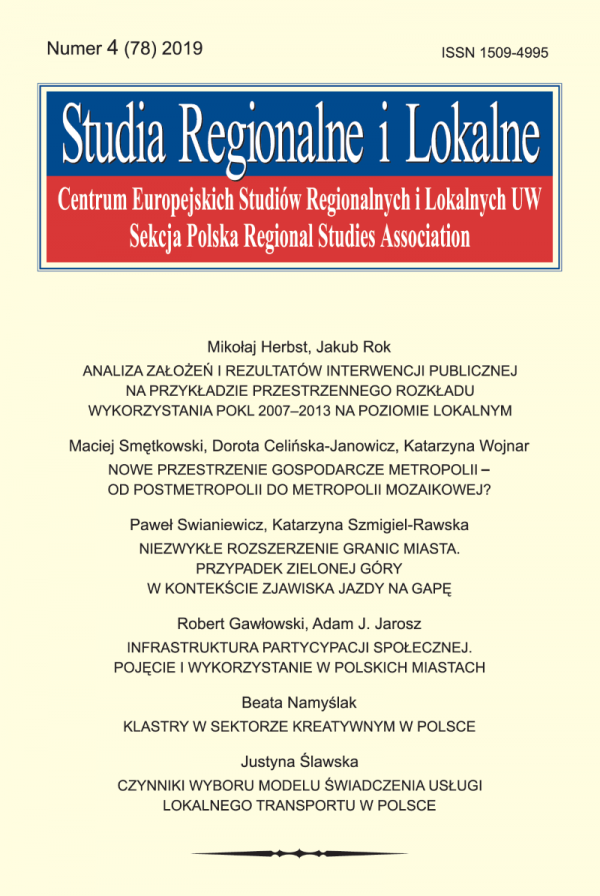Issue:
4(78)/2019
Beata Namyślak
Clusters in the creative sector in Poland
DOI: 10.7366/1509499547805
Klastry w sektorze kreatywnym w Polsce
Artykuł poświęcony jest klastrom w sektorze kreatywnym zlokalizowanym w Polsce. Celem pracy jest przedstawienie czynników motywujących do zakładania tego typu klastrów oraz ukazanie czynników hamujących ich działalność. Badanie przeprowadzono wśród koordynatorów klastrów, wykorzystując przy tym metody CAWI oraz CATI. Badanie wykazało, że czynnikami mającymi kluczowy wpływ na tworzenie badanych klastrów było dążenie do zawiązania współpracy wśród podmiotów, które miały ze sobą kontakt w przeszłości, oraz chęć wzmocnienia pozycji rynkowej i zasięgu oddziaływania klastrów – a zatem głównie czynniki wewnętrzne. Natomiast wśród barier wyróżniono zarówno czynniki wewnętrzne, m.in. niechęć do dzielenia się wiedzą, przewagę rywalizacji nad współpracą, źle odbierany przepływ pracowników w klastrze, jak i czynniki zewnętrzne, np. uzależnienie od zewnętrznych środków finansowania oraz brak zainteresowania ze strony jednostek samorządowych.
Clusters in the creative sector in Poland
The present paper focuses on creative clusters in Poland. Its main goal is to determine the factors behind the establishment of creative clusters and the factors limiting their activity. The study is based on data provided by cluster facilitators, and the CATI and CAWI methods are used for analysis. The study shows that the most important factors contributing to the creation of clusters are internal: the willingness to cooperate, especially between knowledgeable entities, and to strengthen market position and the range of influence. The barriers are: reluctance to share knowledge, the advantage of rivalry over cooperation, poorly perceived flow of employees in clusters (internal factors), as well as dependence on external financing and lack of interest on the part of local government units (external factors).
Affiliation:
Beata Namyślak: Uniwersytet Wrocławski, Instytut Geografii i Rozwoju Regionalnego, pl. Uniwersytecki 1, 50-137 Wrocław; ORCID: 0000-0001-6558-4383;
beata.namyslak@uwr.edu.pl 


